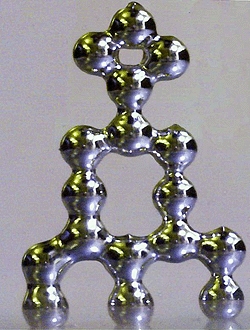The ability to directly print metals with liquid-like properties is said to be important for soft, stretchable, and shape reconfigurable analogs to wires, electrical interconnects, electrodes, antennas, meta-materials, and optical materials.

‘It’s difficult to create structures out of liquids, because liquids want to bead up. But we’ve found that a liquid metal alloy of gallium and indium reacts to the oxygen in the air at room temperature to form a ‘skin’ that allows the liquid metal structures to retain their shapes,’ said Dr Michael Dickey, an assistant professor of chemical and biomolecular engineering at NC State and co-author of a paper describing the work.
The researchers developed multiple techniques for creating these structures, which can be used to connect electronic components in three dimensions.
One technique involves stacking droplets of liquid metal on top of each other. The droplets adhere to one another, but retain their shape – they do not merge into a single, larger droplet.
Another technique injects liquid metal into a polymer template, so that the metal takes on a specific shape. The template is then dissolved, leaving the bare, liquid metal in the desired shape. The researchers also developed techniques for creating liquid metal wires, which retain their shape even when held perpendicular to the substrate.
Dickey’s team is currently exploring how to further develop these techniques, as well as how to use them in various electronics applications and in conjunction with established 3D printing technologies.
The paper, 3D Printing of Free Standing Liquid Metal Microstructures is published online in Advanced Materials and was authored by Collin Ladd, Ju-Hee So, John Muth and Michael D. Dickey, North Carolina State University.




Nanogenerator consumes CO2 to generate electricity
Nice to see my my views being backed up by no less a figure than Sabine Hossenfelder https://youtu.be/QoJzs4fA4fo